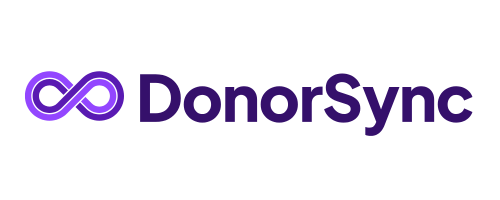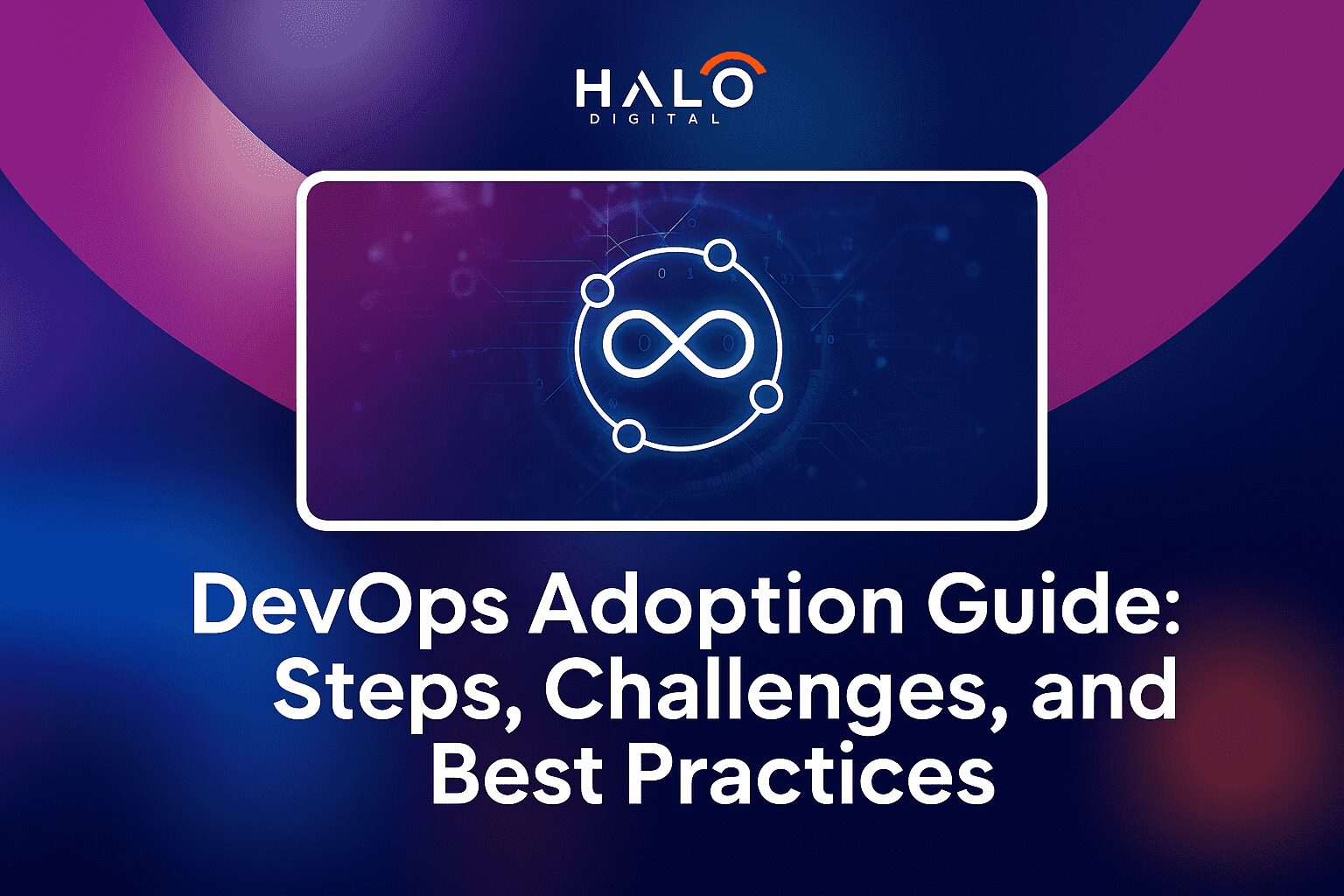The adoption of DevOps isn’t just about introducing more tools and automating deployments. It’s about changing how the operations and development teams collaborate.
The implementation of DevOps is a process of cultural change as well as process improvement and technological upgrades that result in faster releases, higher security, and better scaling.
However, many companies are struggling with DevOps adoption due to the resistance of their culture, the lack of clarity on goals, and a lack of know-how.
In this article we will explain the basics of what DevOps adoption is, what it means, the reasons companies should consider adopting DevOps as a strategy, and the essential steps to follow, as well as the obstacles to be prepared for. Learn how to implement best practices that will ensure long-term adoption.
What Does DevOps Adoption Mean?
DevOps adoption means integrating development and operations into a unified approach to software delivery. Traditionally, the two teams were separated. Developers were focused on developing new features, while the operations team focused on ensuring the stability of the system.
This severing of operations slowed the release process and led to bottlenecks.
If organizations adopt DevOps, it breaks down these boundaries and builds an atmosphere of shared accountability.
Teams work together from design to deployment, making use of the automation process and continuous delivery. This results in quicker innovation, fewer mistakes, and the capability to easily scale software systems.
DevOps adoption also involves establishing the mindset that speed doesn’t compromise the security of or improve quality.
It requires balancing agility with management, which means that companies can respond quickly to market requirements and still maintain the reliability of their systems.
Why Do Organizations Adopt DevOps?
Businesses across all industries embrace DevOps to remain active in the digital economy. Customers are demanding more, and companies have to deliver the latest features, upgrades, and fixes quicker than ever before. DevOps adoption can help satisfy these requirements while reducing operational risk.
Here are the reasons why do organizations adopt devOps:
Faster Delivery and Deployment
One of the primary reasons for the widespread adoption of DevOps is speed. Traditional release cycles can take weeks or even months. With DevOps, businesses are moving towards continuous integration and continuous delivery.
This allows them to roll out new features, bug fixes, and security patches more often. Faster delivery not only makes customers satisfied, but it also allows companies to try out innovative ideas rapidly as well as respond quickly to customer feedback in real time.
Improved Collaboration Across Teams
Prior to DevOps, operations and development frequently had different objectives. Developers were eager to introduce the latest features, while operations wanted to ensure stability in the system. This caused friction and a delay. With the adoption of DevOps, the organizations can align their teams around common goals.
Tools for collaboration such as daily stand-ups and shared dashboards ensure that everyone is working towards the same goals. This eliminates confusion and results in an efficient workflow.
Better Reliability and Scalability
The use of DevOps can also increase the reliability and scaling. Automated testing helps ensure that fewer bugs make it into production. Monitoring tools can detect problems early and help prevent interruptions.
With infrastructure as code and cloud-native environments, businesses can scale applications smoothly as user demand grows. This reassurance builds trust with customers and allows businesses to handle the growing demands without compromising their performance.
What Are the 7 Key Steps for a Successful DevOps Adoption?
Implementing DevOps is a long-term process and not a single-time change. It is important to approach the process carefully, step-by-step. The rush into adopting tools with no clear cultural alignment or goals can result in failure.
Here are the most important steps to take for a successful DevOps adoption.
Step 1 – Define Clear Goals and Outcomes
Each DevOps implementation effort should begin with clearness. What are the reasons your business is implementing DevOps? Do you want to achieve speedier delivery, better reliability, lower costs, or all of these?
Determine tangible results such as the reduction of deployment time by a few days from weeks or improving uptime from 95 percent up to 99.9 percent. Specific goals provide direction and assist in assessing progress over the process of adoption.
Step 2 – Build a DevOps-Ready Culture
Technology alone is not enough to create DevOps work. A shift in culture is crucial. Teams need to embrace the concept of collaboration, shared responsibility, and acceptance of change. Leaders must reduce silos and foster collaboration across functional lines.
Workshops and training will help employees adjust to this new mindset. Without alignment with the culture, DevOps adoption risks becoming an unreachable IT initiative.
Ready to transform your team’s culture? Explore our DevOps consulting and managed cloud services to accelerate adoption and drive lasting change.
Step 3 – Align Development, Operations, and QA
A successful implementation of DevOps requires all parties to collaborate. Development creates features, operations manages infrastructure, and QA assures quality. If these roles do not coincide, then bottlenecks will continue to exist.
Create shared workflows in which the web developers as well as QA collaborate at the beginning of the process. Include operations in the planning stage instead of letting them manage deployments at the end. Achieving alignment means smoother releases and less confusion.
Step 4 – Choose the Right Tools and Automation Frameworks
Tools play a crucial function for DevOps adoption. But a lot of companies make a mistake when they rush into purchasing tools without having a plan. Begin with the basics: version control systems such as Git and CI/CD pipelines like Jenkins and GitHub Actions, and monitoring tools such as Prometheus.
Consider tools based on your needs as a business and their scaling. Automation frameworks must seamlessly integrate with your existing system. Making the right choice will prevent overload of tools and increase effectiveness.
Step 5 – Implement CI/CD and Automated Testing
Continuous integration and continuous delivery are the core of DevOps. Automated pipelines are implemented where each modification to the code is analyzed, then integrated, and then automatically deployed.
Automated testing assures accuracy throughout the entire process. This helps reduce manual work and eliminates human errors. With CI/CD installed, businesses can launch software quicker while ensuring stability.
Step 6 – Start Small, Then Scale Gradually
Large-scale transformations usually fail due to the complexity. It is better to begin with a smaller scale. Choose a single project or single department to test your DevOps implementation. Check your workflows, automation tools, and culture in this controlled environment.
Once you achieve success, scale the practices across the organization. Gradual scaling ensures smoother adoption and builds confidence among teams.
Step 7 – Measure, Monitor, and Continuously Improve
DevOps can be a continuous process that is ongoing. Regularly measuring is vital to keep track of progress and spot areas of improvement. Use metrics like deployment frequency, mean time to recovery, and error rates.
Monitor systems in real-time to identify issues before they become serious. Create a culture of constant improvement in which teams are able to learn from mistakes and refine procedures. This will ensure that DevOps implementation is effective over the long run.
Top 5 Common Challenges in DevOps Adoption (and How to Overcome Them)
Although the advantages of DevOps are evident, the process of implementing it isn’t without challenges. Numerous organizations encounter problems that delay or hinder the process. If you are aware of these challenges and prepare strategies in advance, you increase your odds of success.
Challenge 1 – Cultural and Organisational Resistance
A major obstacle for DevOps adoption is resistance from the culture. People may be afraid of changes in processes or scared of the possibility of job changes. Teams that have a habit of working in silos could be hesitant to collaborate.
To get over this hurdle, leaders must explain the advantages in a clear manner. Include employees in the change and explain the way DevOps can make their job easier rather than more challenging. The change champions in teams may also assist in promoting acceptance of the culture.
Challenge 2 – Lack of Skilled Resources
DevOps requires expertise in automation, cloud platforms, CI/CD pipelines, and security practices. Many companies struggle because of insufficient resources. This can slow down the adoption process and lead to a greater dependence on vendors from outside.
To combat this, make sure you put money into the training and certifications of your existing team members. In collaboration with skilled DevOps consultants can also speed up the process while also developing internal capabilities.
Challenge 3 – Tool Overload Without Strategy
Another problem that can be encountered is overuse. Companies often use numerous DevOps tools without having a plan in place, leading to a lack of efficiency and high cost.
The most important thing is to start small, using the most essential tools, and then expand slowly. Examine each tool on how it contributes to your company’s goals. Use the same tools across all teams to avoid duplicates and confusion.
Challenge 4 – Security and Compliance Barriers
Security is usually viewed as an afterthought in DevOps adoption. In other industries, like healthcare, finance, and government, compliance and data security are not negotiable. Making changes quickly without adequate security measures can increase the risks.
This problem can be addressed by implementing DevSecOps techniques. Security should be integrated into every step of the pipeline instead of being added in the final stage.
Security scans that are automated and check for compliance and encryption techniques ensure that teams can release software on time without compromising management.
Challenge 5 – Difficulty in Scaling Across the Enterprise
Many companies succeed in implementing DevOps for small groups or projects but have difficulty scaling it to the entire enterprise. Inconsistent methods, leadership buy-in, and uniform processes cause fragmentation.
To address this issue, set up the enterprise-wide DevOps frameworks. Inspire leadership involvement and establish an overall DevOps team that will guide departments.
Utilize the same metrics, tools, and procedures to ensure that you are consistent as you grow the use of your tools and methods.
Best Practices for Sustainable DevOps Adoption
Adopting DevOps isn’t only about solving immediate problems. To be truly successful, organizations must follow the best practices to ensure DevOps is viable in the long haul. Here are some key principles that will help keep your DevOps progress on the right track.
Best Practice 1 – Encourage Continuous Learning and Training
Technology changes quickly and DevOps tools upgrade every year. A single training session is not enough. Businesses must invest in continuous learning. Encourage employees to attend seminars to earn certifications, attend workshops, and try out new tools.
Create knowledge-sharing platforms where teams can share their knowledge and learn from each other’s achievements and mistakes. Continuous learning helps your team remain current and capable of facing new challenges with DevOps adoption.
Best Practice 2 – Invest in Cloud-Native and Microservices
DevOps excels in cloud-based environments. Monolithic software is difficult to grow and takes a long time to upgrade. By implementing cloud-native architectures as well as microservices, businesses can gain agility and speed.
Microservices enable teams to make modifications to specific components without impacting the entire system. When combined with containerization tools like Docker and Kubernetes, this method allows scaling and speedier recovery.
Insisting on these architectures will make DevOps implementation more efficient and future-proof.
Best Practice 3 – Build a Shared Responsibility Model
An effective adoption of DevOps requires the use of a shared responsibility model. In the traditional model the developers are blamed for operations slowdowns, and operations blame the developers for faulty code. This blame game slows down innovation.
As a result of shared responsibility, both teams control outcomes in tandem. Developers are focused on security and performance, while operations help speed up delivery.
This aligns trust and accountability throughout the entire organization.
Best Practice 4 – Track KPIs and Business Value
Without measuring, organizations can’t be sure if DevOps implementation is producing results. Keep track of both business and technical KPIs.
Technical KPIs include the frequency of deployment, the mean time to recovery, as well as failure rates. Business KPIs cover customer satisfaction as well as revenue impact and cost reductions.
Connecting DevOps results to business benefits helps to ensure leadership support and ongoing investment in DevOps methods.
How to Choose the Right DevOps Partner
Finding the best DevOps partner can make the process easy and efficient. A trusted partner does not just implement tools but also assists your teams to embrace changes in culture and make improvements over the long term.
In evaluating an DevOps partner, look out for:
- Expertise in the Industry: Practical experience across various types of businesses and sectors.
- Cloud and Automation Skills: Expertise in the top cloud platforms, automation tools, and pipelines for CI/CD.
- Security and Compliance Expertise: The ability to integrate DevSecOps with other systems and meet the requirements of regulatory agencies.
- Enterprise-Scale Capabilities: Experience scaling DevOps across complex, large enterprises.
- Measurable Results: Client case studies, improvements in performance, and ROI-driven outcomes.
- End-to-End support: Consulting, implementation, and managed services for sustainable adoption.
FAQs
What is the biggest challenge in DevOps adoption?
The biggest challenge in DevOps adoption is cultural resistance, as many employees are used to traditional processes and resist change.
How long does DevOps adoption take?
DevOps adoption can take a few months for small projects, while large enterprises may need several years depending on complexity, infrastructure, team size, and automation goals.
Can DevOps work for small businesses or only enterprises?
DevOps works for both small businesses and enterprises, with smaller teams often adopting it faster due to fewer silos.
Is DevOps adoption expensive?
DevOps adoption costs vary, with small businesses starting cheaply using open-source tools, while enterprises invest more in automation and consulting.
Final Thoughts – DevOps Adoption
DevOps adoption is not an option anymore for companies that wish to stay competitive. It speeds up delivery, enhances cooperation, and improves the reliability of your business. But it is more than just some tools. It requires cultural change that is based on clear goals and constant improvement.
Organizations need to address issues like resistance, skill gaps, and security issues by implementing the appropriate strategies. With a structured approach and best practices proven to work, businesses can implement DevOps successfully and attain measurable business results.
Arsalan Chauhdary is the CEO of Halo Digital and a senior full-stack developer with over 8 years of experience building scalable, secure, and high-performing digital solutions. As a thought-provoking leader and hands-on architect, he blends strategy with code to transform ideas into impactful web and mobile platforms. Passionate about clean architecture, Laravel, JavaScript, and solving real-world problems, Arsalan continues to guide teams and clients through the evolving landscape of modern development.



























